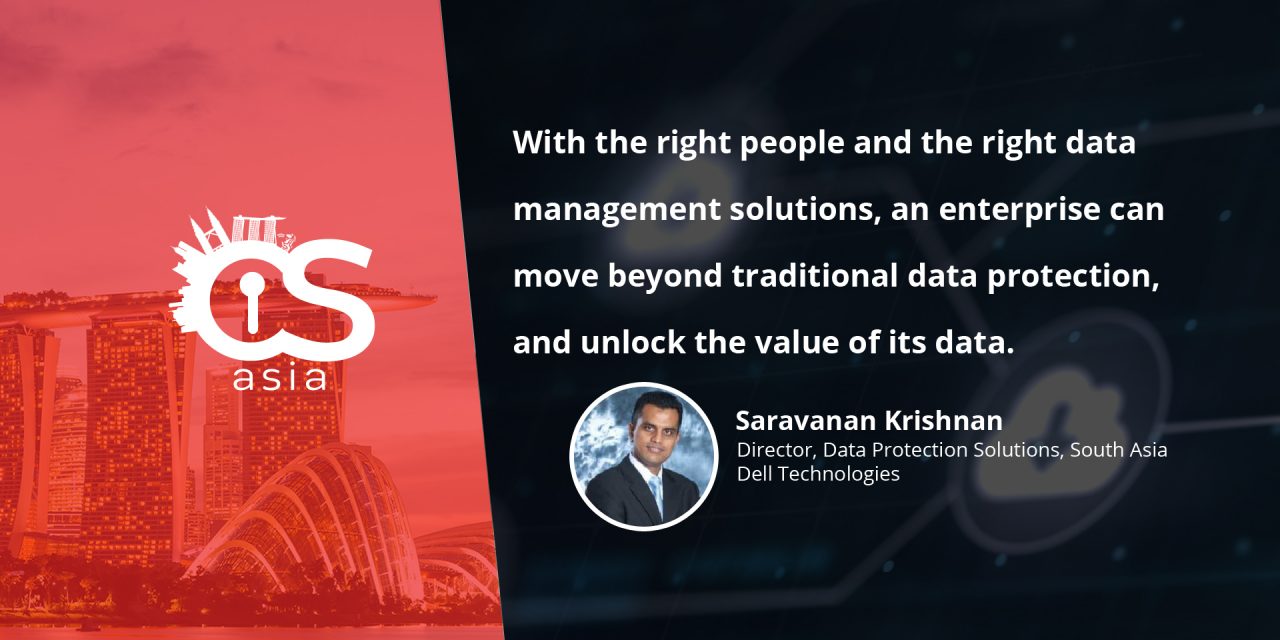The exponential growth of data value and volume means that enterprise survival hinges on obsessing over its use and protection.
Over the past year, we saw four industry mega-trends in Asia Pacific & Japan (APJ) that are likely to lead organizations to re-design how they manage and protect their data in 2020 and beyond:
- Data value: Data is not merely used to support the business anymore—increasingly data is the business. The increasing value of data is driving organizations to retain more information so that they can explore new opportunities to increase customer loyalty, bring new services to market, and compete more effectively.
- Multi-cloud approach: According to our Digital Transformation Index, 47% of businesses in APJ are planning to invest in multi-cloud frameworks over the next three years. Enterprises are using on-premise data services while leveraging cloud services, without being locked into a single cloud provider.
Cloud-native applications, consisting of containers and functions, introduce new characteristics to workloads and data. They enable greater portability as applications can move seamlessly from cloud-to-cloud as well as between on-premise data centers and multiple public clouds. Given the fluidity and highly transient nature of cloud-native applications, organizations increasingly need the flexibility to perform data protection operations anywhere cloud native apps reside. Likewise, it is also important to have the ability to protect cloud native entities in one location with the option to recover the data from somewhere else—so they are not tied to where they are running. - Distributed data: Data is increasingly being created out across edge locations as well as moving between core data center and multi-cloud environments. For enterprises, ensuring the protection and recoverability of all this information will become increasingly challenging.
- Application transformation: Organizations are moving increasingly toward Agile application deployment methodologies to speed up time-to-market and acceleration innovation that is driving the adoption of cloud-native applications based on Kubernetes containers and functions. As organizations move to cloud-native applications, they need to continue protecting traditional workloads like Exchange, SQL, Oracle, SAP Hana and file system data in addition to managing next generation workloads like SaaS applications and cloud-native applications deployed in containers, as well as functions and low-code apps. As application architectures change, so does the data—in form, construct, and volume. This transition needs to be considered as a part of the design and when we gain a new application, we might lose control of some of the data in the process.
Emerging risks
The exponential growth of data combined with increasing data value, are creating opportunities as well as new risks as organizations grapple with how to reliably and sustainably protect their information.
According to the Dell Technologies Global Data Protection Index 2020 Snapshot, organizations in APJ managed, on average, 13.31 petabytes of data in 2019 alone.
Dell Technologies’ research found that the average estimated total cost of data loss in APJ has increased to more than US$1.3 million per organization over the last 12 months, rising 39% from 2018 to 2019. As the value of an enterprise’s data increases, the cost of data lost increases substantially.
Companies also face increased security threats and cyberattacks. According to research commissioned by VMware Carbon Black published in October 2019, as many as 96% of organizations in Singapore have had at least one breach in the preceding 12-month period due to external cyberattacks. The report also showed that half of organizations in Singapore affected by data breaches incurred financial losses, while around eight in 10 saw their reputation taking a hit.
In Singapore and across the Asia Pacific region, many organizations lack the deep expertise and ability to fully leverage their “security” technologies to protect their data from sophisticated hackers. Recent ransomware cases especially in the financial services industry, utilities and critical infrastructure, as well as the public sector (especially the civil service) are testimony to the urgent need for organizations to create robust processes to manage and safeguard data.
Without a well-thought-out data protection strategy, the chances of creating value are greatly diminished.With data increasingly being distributed across the edge, the core and the cloud, “Where is my data and is it protected?” is becoming an increasingly vital question.
The way forward for businesses
In 2020 and the years beyond, organizations will need to leverage both, proven data protection solutions that deliver the foundational data protection required to protect traditional workloads as well as with modern data protection technology that offer a range of capabilities to customers in APJ:
- Cloud native protection that includes the ability to protect cloud-native workloads like Mongo DB, Hadoop and Cloudera as well as SaaS applications like O365. It should also include the ability to protect applications deployed on Kubernetes containers or distributed as functions in the cloud.
- Autonomous protection that auto-detects and auto-protects application workloads regardless of the platform they are deployed on, as well as protection services that have the ability to follow workloads wherever they operate across edge-to-core-to cloud infrastructure.
- Business service recovery: the ability to automatically orchestrate the recovery of an entire business service by recovering all of the disparate hardware and software elements that make up a business service as they are deployed on-premise, in the cloud or both.
- Data services: the ability to ensure protection, security, efficiency and compliance of workloads wherever they live across multi-cloud environments. Moreover, there should be capabilities to deliver more business value by enabling on-demand access to secondary copies of data to accelerate innovation and drive deeper business insight.
In the new data decade, organizations that leverage comprehensive data management and protection capabilities across their multi-platform and multi-cloud environments, will be prepared to effectively mitigate emerging risks, accelerate innovation, lower costs, and optimize business outcomes.
Ultimately, with the right people and the right data management solutions, an enterprise can move beyond traditional data protection, and unlock the value of its data.

















